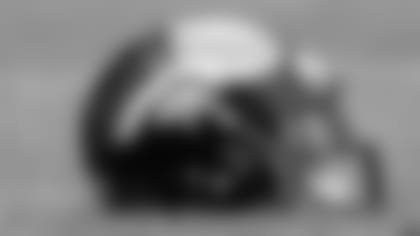The Denver Broncos of today stand head and shoulders above most National Football League franchises, one of just four teams to have gone to eight Super Bowls and one of just nine to have won three or more, and boasting the best home record in pro football over the past 43 years (from 1973-2015). It's a proud legacy, to which the Broncos add on every year.
And those three Super Bowls have been won in the famous orange and blue, with the strong, powerful signature horse which is internationally recognized as the Broncos' logo. But as with all things, it was not always such.
Back in the day, when the Broncos played their first game back in 1960, they were known as a cheap franchise.
So cheap that the team general manager Dean Griffing, once ran into the stands to wrestle a ball away from a fan on an extra point kick. He wound up apologizing and giving the fan free tickets (which were virtually worthless, of course). But you get the idea.
Griffing bought the team's first uniforms used from a defunct minor league bowl game, and those togs reached notorious fame of their ugliness, mustard and brown, with vertically striped socks. Of course, there was no logo on the helmets, just the player's uniform number, like a brown version of what the University of Alabama wears today.
Denver wore those uniforms from 1960-62, then hired a real general manager (sorry, Dean) in Jack Faulkner, who changed the colors to orange and blue, ad brought in what remains as my favorite Bronco logo, the caricature bucking horse. That horse was designed by a local sportswriter, Bob Bowie of The Denver Post. In the early and earlier days of journalism sportswriters often were cartoonists as well, as there was not as much photography, for one thing, and cartoons brought an extra level of enjoyment to a public that often only had the daily paper for both information and entertainment.
Bowie, who by the way served some side duty as a member of the Broncos' official stats crew--an extra job which today would not be sanctioned either by the paper or the team--was a fine caricature cartoonist and created both the horse which adorned the helmet and the horse with ride that appeared on Denver Broncos stationary.
That white horse on the orange helmet remained the helmet logo from 1962 through 1966. Then Lou Saban came in as the general manager and head coach, and he naturally wanted a stronger image logo, but could not decide on anything for 1967.
Saban changed the helmet color from orange to blue, but as he could not decide on a logo in time for the season, 1967 remains the only season in team history in which the Broncos had nothing decorative on the helmet--it was just plain blue.
In 1968 Saban put the "D" with the rearing horse on the helmet, and so it remained for three decades, until the team adopted the logo which it proudly wears today. But back for a moment to 1962.
Although it is always shown as a white horse on an orange helmet, including on the helmet on display in the Broncos' present-day lobby trophy case, a little known historical fact it that there was another official helmet for the first five games of 1962.
The original horse was blue, not white, but because all football games were still being televised in black-and-white in 1962, the blue horse looked on TV like a splotch of mud of the orange helmet.
It just did not stand out, so Faulkner (who was American Football League Coach of the Year for his role in the Broncos' 1962 turnaround 7-7 season) switched to the newly created white horse logo, which was first worn against the Raiders at Oakland in week six of the 1962 season.
But for the first five games, the horse was blue in '62, and I personally continue to express my view that this helmet should be included in the lobby display with the other helmets, as it was just as official and just as real.
So way before the slick and shiny world which we all enjoy today, Dean Griffing put the Broncos in brown helmets with white numerals, Jack Faulkner used Bob Bowie's caricature horse (in blue, then in white), and Lou Saban chose the "D."
Every version of a team's logo stands for something, every level of success and disappointment, and each one should be respected like the versions of a nation's flag that changes over the centuries.
And of course, none of that began without late Broncos' General Manager Fred Gehrke, who created the concept of the football logo while starting at running back for the Los Angeles Rams and earning Pioneer Award status in the Pro Football Hall of Fame along the way. But Fred is another column for another time.
This is just a quick look back at the sartorial helmet standards of the Denver Broncos back in the days before they were the winners of Super Bowl 50 and the World Champions of pro football.






